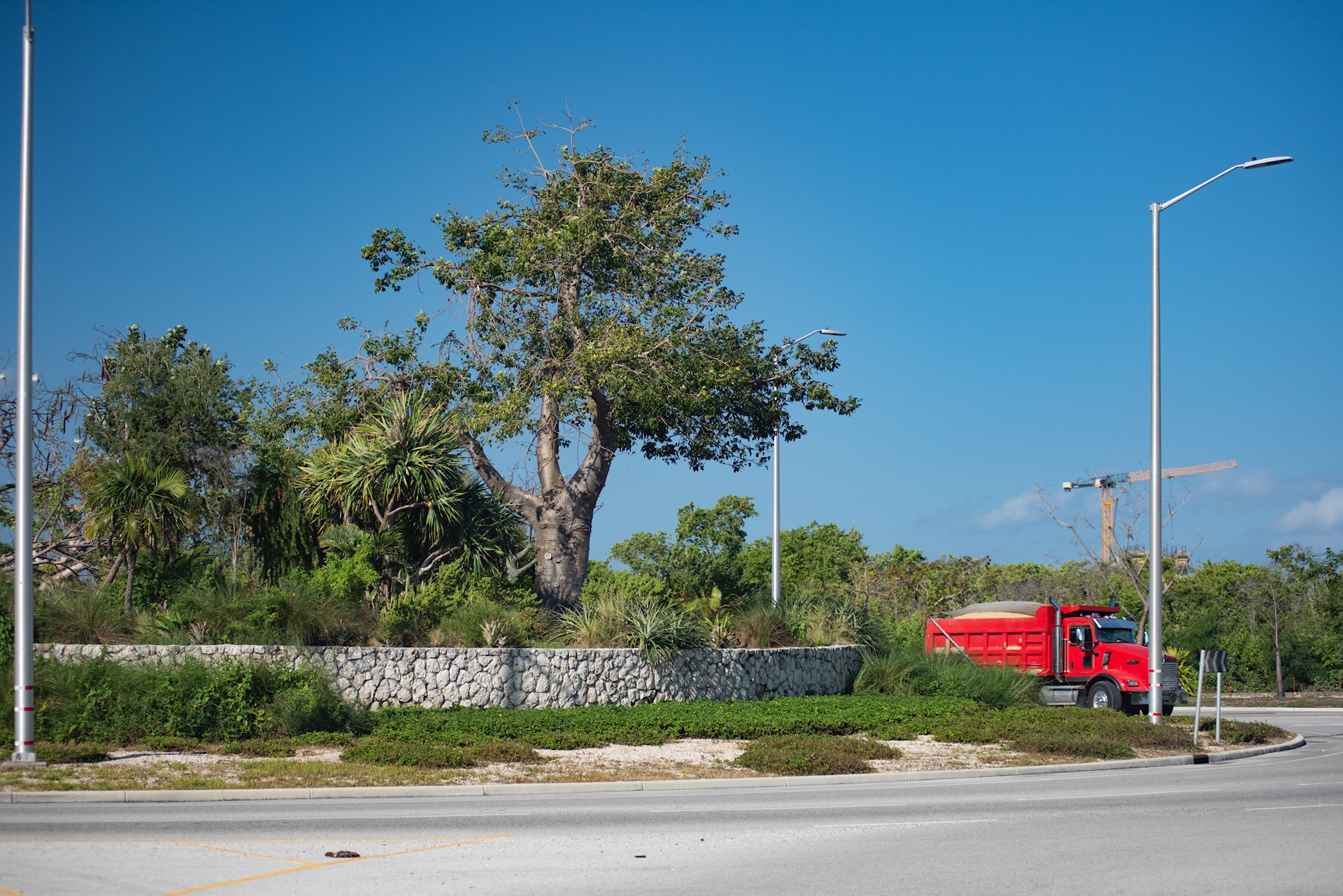

One of the most bizarre and extraordinary trees one could lay eyes on sits atop its raised rock bed on the Airport Connector Road roundabout just south of Cayman International School. Looking at this tree, the first word that might come to mind is "mighty."
The baobab, or Adansonia digitata, is not only mighty in its height, but also in its swollen trunk. Native to the African continent, this tree is an excellent example of adapting to surrounding conditions.
Most happy growing in dry savannas or scrublands, the baobab waits patiently for the rainy season and soaks up all the water it will need for the year in that period alone. Its swollen trunk isn't just for looks — it serves as a major storage unit for the baobab. Due to extreme variances in available water in its native habitat, the tree is in a group of very funky specimens called caudiciforms. The members of this group have trunks that swell, enabling them to hold large amounts of water.
One baobab tree can hold up to 26,000 gallons of water through a season to get it through the dry months. Another astounding feature of Adansonia digitata is that it is deciduous. It will lose its leaves for a period during the dry season to cut back on transpiration, which is water loss through the leaves. Some trees will hold their leaves nearly year round if provided with supplemental water; however, they hate to be waterlogged.
Growing preferably in full sun to nearly 80 feet high and with a trunk diameter of up to 45 feet, these amazing trees have been known to live more than 1,000 years, making the baobab one of the oldest recorded angiosperms in the world.
Flowering in the summer months, baobabs have spectacular pendulous white flowers with thick, leathery petals and a bush filled with stamens at the tip. They are heavy and emit a sweet fragrance at night when they bloom to attract bats — their pollinator friends.
The fruits they produce are edible and have long been a source of water and a nutritious food treat, but before you consume a baobab fruit or any other part of the tree, be sure to consult an expert on preparation of edible food sources.
It's very common for baobab trees to hollow out as they age, providing shelter for animals and birds. Large, hollowed-out baobabs have also been turned into a range of things, including shops, a bar, a restaurant and even a tourist accommodation.

About the author
Shannon Schmidt is a horticulture manager at Dart’s Arboretum Services Ltd. Joining Dart in 2012, Shannon previously worked in parks, public gardens and tourism properties, among others. Originally from the Finger Lakes region of New York State, Shannon loves island life, spending time paddleboarding around the canals and mangroves, in the sea, and spending time outdoors with her two energetic Boston Terriers Nollie and Ebbie and her equally energetic partner Chase! Shannon holds a Bachelor of Science in Recreation, Park and Tourism Management from The Pennsylvania State University and a Diploma in Horticulture from the Longwood Gardens Professional School of Horticulture, and loves spending time swinging in a hammock, with her favourite smoothie from Jessie’s Juice Bar and reading material from Books & Books.